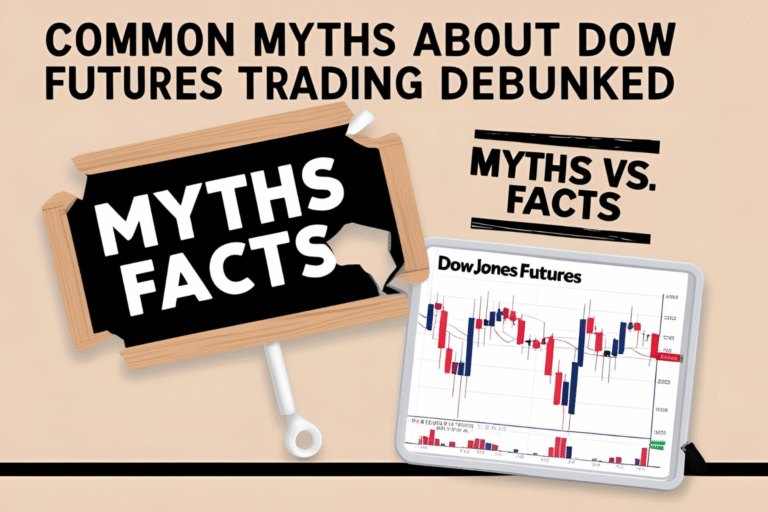Futures Trading Glossary: 25 Must-Know Terms for Beginners
Introduction
New to futures trading? The jargon can feel overwhelming at first. That’s why we created this futures trading glossary—a simple list of 25 essential terms every beginner should know. Whether you’re trading Dow futures or any other contract, these definitions will help you better understand the market and trade with confidence.
Futures Trading Glossary: Key Terms Explained
- Futures Contract
An agreement to buy or sell an asset at a set price on a future date. - Dow Futures
Futures contracts based on the Dow Jones Industrial Average. - E-mini / Micro E-mini
Smaller versions of standard futures contracts, ideal for individual traders. - Ticker Symbol
Code used to identify a contract—e.g., YM for E-mini Dow, MYM for Micro Dow. - Margin
The money you must deposit to open and maintain a futures position. - Leverage
Using a small amount of capital to control a larger position. - Tick
The smallest price movement a futures contract can make. - Tick Value
The dollar amount gained or lost per tick. For YM, it’s $5; for MYM, $0.50. - Notional Value
The total value of a contract (index × multiplier). - Expiration Date
The last day you can trade the futures contract before it settles. - Settlement
How the contract is finalized—cash-settled or physically delivered. - Long Position
Buying a futures contract to profit from rising prices. - Short Position
Selling a futures contract to profit from falling prices. - Stop-Loss Order
An order to exit a trade automatically to limit losses. - Take-Profit Order
An order that closes a trade automatically once a set profit is reached. - Slippage
The difference between expected and actual execution price. - Volatility
The degree of price movement in a market. - Support Level
A price point where a contract typically finds buying interest. - Resistance Level
A price level where selling pressure may cause a reversal. - Trend
The general direction of market prices—uptrend, downtrend, or sideways. - Breakout
When price moves outside a defined support or resistance level. - Volume
The number of contracts traded in a given time period. - Liquidity
How easily a contract can be bought or sold without affecting price. - Hedging
Using futures to protect against losses in another investment. - Speculation
Trading futures based on expected price movement to make a profit.
How to Use This Glossary
Refer to this glossary whenever you encounter unfamiliar terms. Bookmark it for quick access and use it alongside live charts and analysis as you trade.
Conclusion
This futures trading glossary gives you a strong foundation in trading language. Knowing these 25 key terms will make it easier to understand strategies, follow market commentary, and use trading platforms more effectively. The more fluent you become with these terms, the more confident you’ll feel placing your trades.
FAQs
Q1. Do I need to memorize all these terms?
No, but understanding the basics will help you navigate platforms and trading discussions more easily.
Q2. Are these terms used only in Dow futures trading?
Most apply to all futures markets, not just Dow futures.
Q3. What’s the most important term to understand first?
Start with “margin,” “tick,” “contract size,” and “leverage”—these affect your risk directly.
Q4. Where can I practice using these terms?
Open a demo account on platforms like TradingView, ThinkorSwim, or NinjaTrader.
Q5. Is there a downloadable version of this glossary?
You can copy and paste it into a document for offline reference or save the webpage for quick access.

